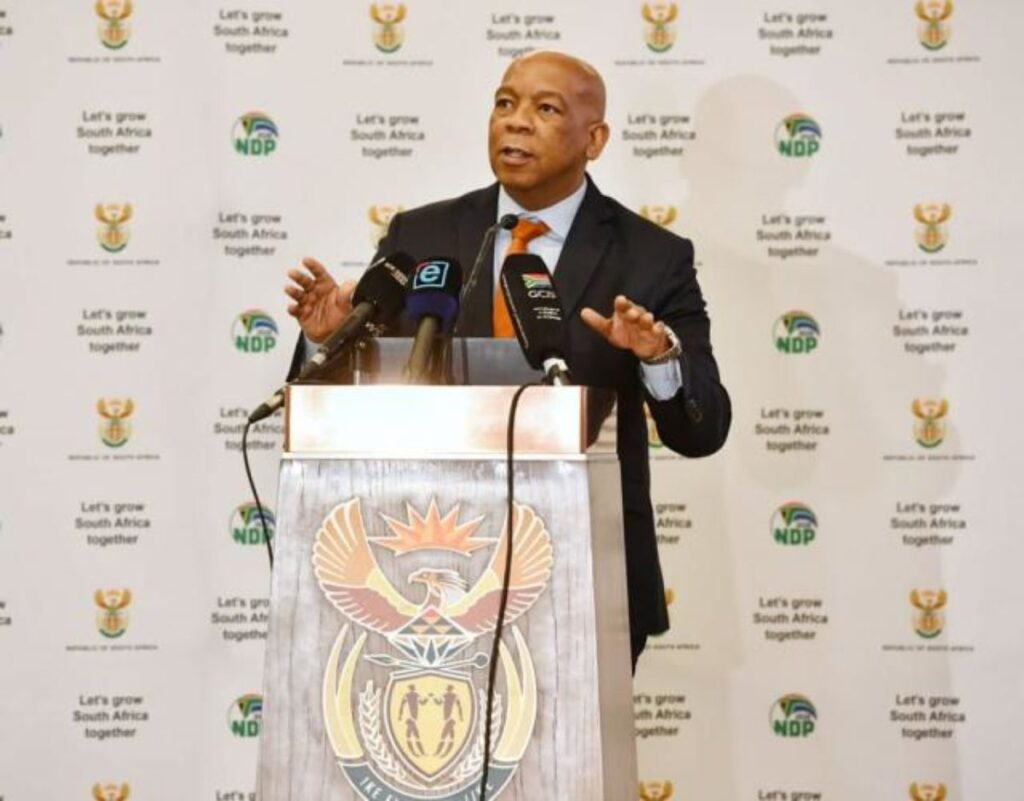Minister of Electricity, Dr. Kgosientsho Ramokgopa, made a significant announcement at a media briefing on Sunday, revealing that only 56% of the Energy Action Plan (EAP) aimed at ending rolling blackouts and achieving energy security in the country has been successfully completed. The disclosure sheds light on the progress and challenges faced in the implementation of critical measures to address the ongoing energy crisis.
The Energy Action Plan and Its Objectives
The Energy Action Plan, launched by the government in response to the persistent energy challenges, outlines a comprehensive roadmap to ensure a stable electricity supply, put an end to the recurring power outages, and create a secure energy infrastructure for South Africa.
The plan encompasses various initiatives, including the expansion of renewable energy sources, the modernization and maintenance of existing power plants, investment in new infrastructure, and efforts to improve energy efficiency and conservation.
Completion Rate and Remaining Challenges
eight actions had been completed (16%), while 20 are on track (40%), meaning that progress was keeping up with the timelines set out for these tasks. The Energy Action Plan is the responsibility of the National Energy Crisis Committee (Necom), headed by Ramokgopa.
“I think we must engender in the discourse the need for us to be transparent, the need for us to be accountable. It’s one thing for the President to unveil the Energy Action Plan; it’s quite another to report against the targets of the Energy Action Plan, and we really want to normalise this exercise,” Ramokgopa said.
Of the remaining 22 actions, 12 are delayed but “progressing well” (24%); eight are “off track” (16%); and two have not been started (4%). Ramokgopa said it was a “big negative” to have some projects off track, and that interventions were under way to address this.
Impact on Rolling Blackouts and Energy Security
Despite the partial success of the Energy Action Plan, rolling blackouts, also known as load shedding, continue to affect South Africa’s energy grid. These power outages have had adverse effects on businesses, households, and economic productivity.
Minister Ramokgopa acknowledged the urgency of resolving the energy crisis and the need for accelerated efforts to achieve full energy security. He emphasized that continued cooperation between government entities, private sector stakeholders, and the public is essential to overcome the challenges and expedite the implementation of the remaining aspects of the plan.
Public Reaction and Expectations
The announcement by the Minister of Electricity has generated mixed reactions among the South African public. While some citizens appreciate the transparency and efforts to address the energy crisis, others express frustration over the prolonged duration of load shedding and its impact on their daily lives.
Many are hopeful that the remaining 44% of the Energy Action Plan will be implemented swiftly to bring an end to load shedding and ensure a stable and reliable electricity supply across the country.
Looking Ahead
As South Africa grapples with the ongoing energy crisis, the focus remains on fast-tracking the implementation of the Energy Action Plan and addressing the challenges that have hindered its progress thus far. The government’s commitment to achieving energy security and ending rolling blackouts will be closely monitored by the public and industry stakeholders alike.
While acknowledging the challenges faced, the minister’s call for increased cooperation and accelerated efforts demonstrates the government’s commitment to achieving energy security and ending rolling blackouts. As the remaining aspects of the plan are pursued, all eyes remain on the government’s actions and the results achieved in overcoming the nation’s pressing energy challenges.
